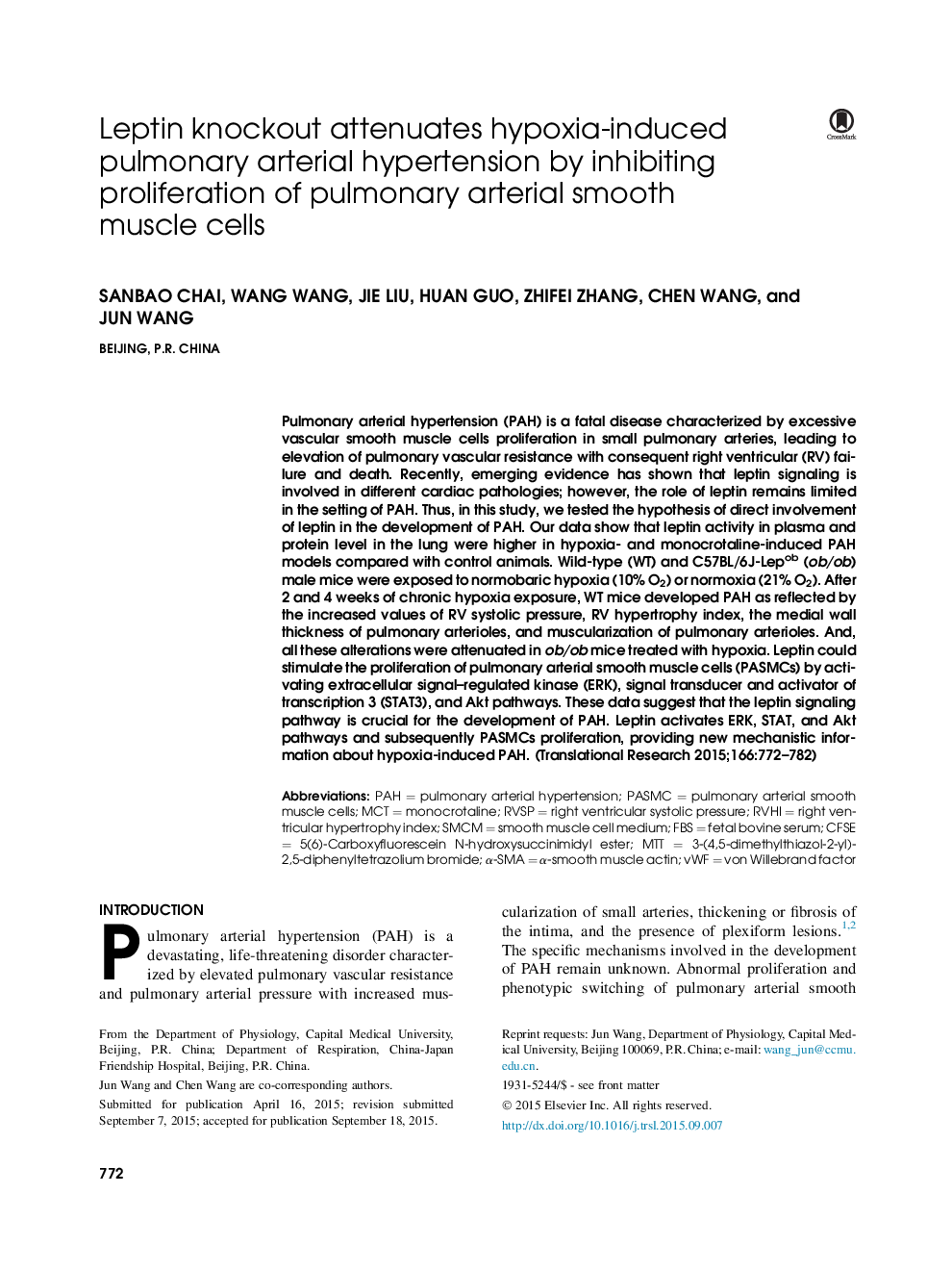| Article ID | Journal | Published Year | Pages | File Type |
|---|---|---|---|---|
| 3840115 | Translational Research | 2015 | 11 Pages |
Pulmonary arterial hypertension (PAH) is a fatal disease characterized by excessive vascular smooth muscle cells proliferation in small pulmonary arteries, leading to elevation of pulmonary vascular resistance with consequent right ventricular (RV) failure and death. Recently, emerging evidence has shown that leptin signaling is involved in different cardiac pathologies; however, the role of leptin remains limited in the setting of PAH. Thus, in this study, we tested the hypothesis of direct involvement of leptin in the development of PAH. Our data show that leptin activity in plasma and protein level in the lung were higher in hypoxia- and monocrotaline-induced PAH models compared with control animals. Wild-type (WT) and C57BL/6J-Lepob (ob/ob) male mice were exposed to normobaric hypoxia (10% O2) or normoxia (21% O2). After 2 and 4 weeks of chronic hypoxia exposure, WT mice developed PAH as reflected by the increased values of RV systolic pressure, RV hypertrophy index, the medial wall thickness of pulmonary arterioles, and muscularization of pulmonary arterioles. And, all these alterations were attenuated in ob/ob mice treated with hypoxia. Leptin could stimulate the proliferation of pulmonary arterial smooth muscle cells (PASMCs) by activating extracellular signal–regulated kinase (ERK), signal transducer and activator of transcription 3 (STAT3), and Akt pathways. These data suggest that the leptin signaling pathway is crucial for the development of PAH. Leptin activates ERK, STAT, and Akt pathways and subsequently PASMCs proliferation, providing new mechanistic information about hypoxia-induced PAH.
